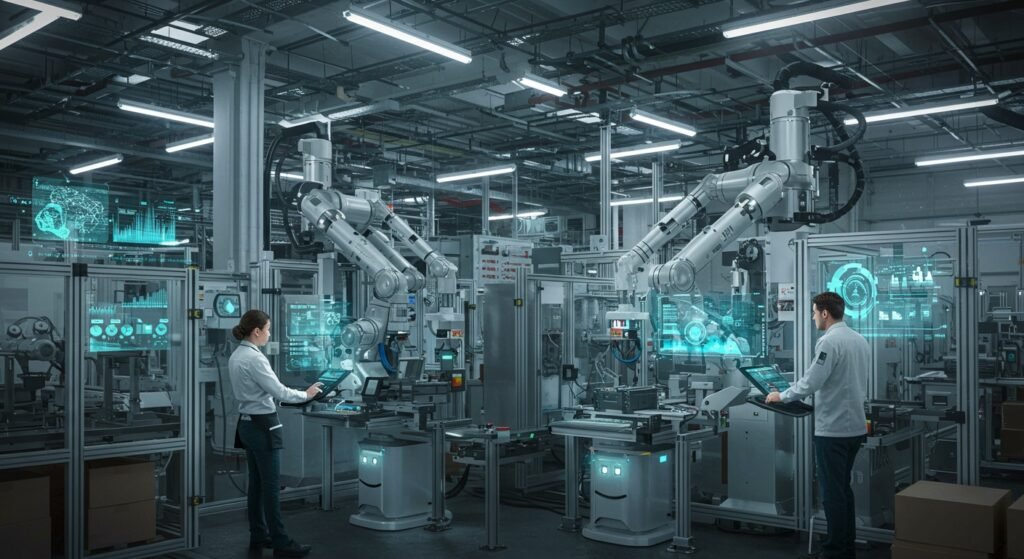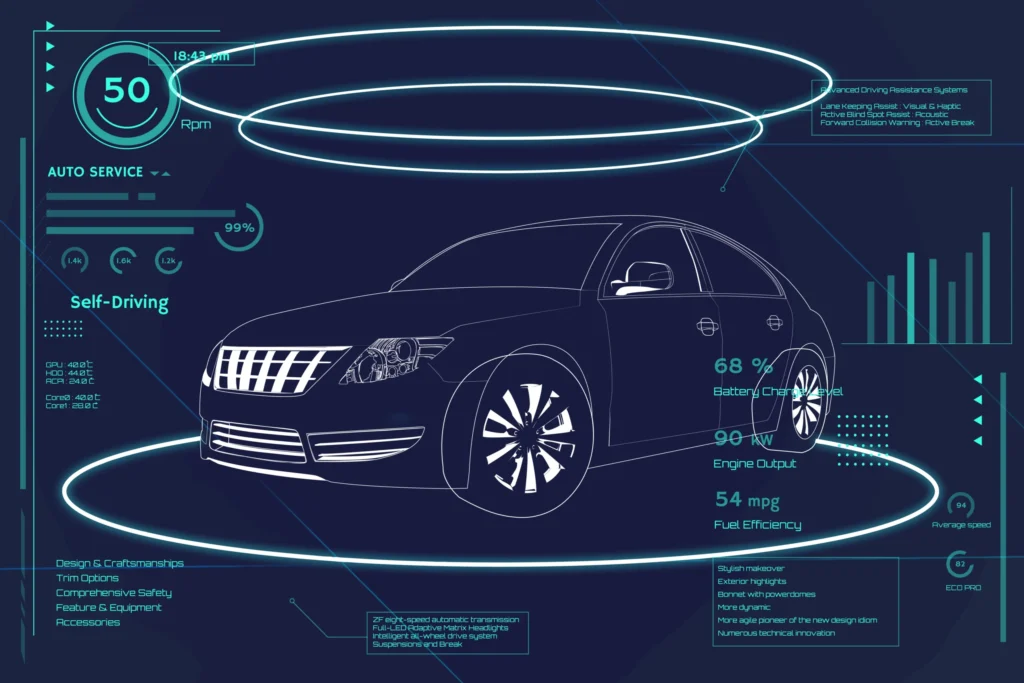The Rise of Industry 5.0: 5 Revolutionary Trends Shaping Tomorrow’s Factories
The industrial landscape is perpetually evolving, and we stand at the precipice of its next great transformation: The Rise of Industry 5.0. Moving beyond the efficiency-driven automation of Industry 4.0, this new paradigm places human well-being, sustainability, and resilience at its core. It envisions a future where technology serves humanity, creating symbiotic relationships between intelligent machines and skilled individuals. This shift is not just about adopting new tools, but fundamentally re-evaluating how industries operate to create more value for society, the environment, and the economy.
Table of Contents
- Beyond Efficiency: The Core Pillars of Industry 5.0
- Enabling Technologies for The Rise of Industry 5.0
- Industry 5.0 in Action: Practical Applications
- Industry 4.0 vs. Industry 5.0: A Quick Comparison
- Conclusion: A Human-Centric Industrial Future
Beyond Efficiency: The Core Pillars of Industry 5.0
Industry 5.0 is built on three foundational pillars that differentiate it from its predecessor, emphasizing a holistic approach to industrial development.
Human-Centricity: The Human-Machine Collaboration
At the heart of Industry 5.0 is the recognition that human intelligence and creativity are indispensable. While Industry 4.0 focused on automating tasks, Industry 5.0 champions human-robot collaboration (HRC), where collaborative robots (cobots) assist humans with repetitive or hazardous tasks, allowing human workers to focus on problem-solving, innovation, and decision-making. This fosters a more engaging, safer, and empowering work environment, enhancing job satisfaction and productivity through synergy rather than replacement.
Sustainability: Greener Production for a Better Planet
Environmental responsibility is no longer an option but a necessity. Industry 5.0 heavily emphasizes sustainable practices, including resource efficiency, waste reduction, and the adoption of circular economy principles. This involves optimizing energy consumption, using renewable resources, designing products for longevity and recyclability, and implementing closed-loop systems. The goal is to minimize the ecological footprint of industrial processes, contributing to a healthier planet for future generations.
Resilience: Building Robust Supply Chains
The recent global disruptions have underscored the critical need for resilient supply chains. Industry 5.0 aims to build robust and adaptive manufacturing systems capable of withstanding unforeseen shocks, such as pandemics, natural disasters, or geopolitical shifts. This involves diversifying supply sources, implementing advanced data analytics for predictive maintenance, and creating agile production lines that can quickly pivot to meet changing demands. It’s about ensuring continuity and stability in an unpredictable world.
Enabling Technologies for The Rise of Industry 5.0
The transition to Industry 5.0 is powered by an array of sophisticated technologies that facilitate the human-centric, sustainable, and resilient objectives.
- Artificial Intelligence (AI) and Machine Learning (ML): Beyond optimizing processes, AI and ML are leveraged for predictive analytics, personalized human-machine interfaces, and complex problem-solving that enhances human decision-making.
- Internet of Things (IoT) and Digital Twins: IoT sensors collect real-time data from across the factory floor, which can then be used to create digital twins – virtual replicas of physical assets and processes. These twins allow for simulation, optimization, and proactive maintenance, improving efficiency and reducing waste.
- Robotics and Cobots: While industrial robots handle heavy, repetitive tasks, cobots work alongside humans, designed for safe interaction and collaborative work, augmenting human capabilities.
- Big Data Analytics: Processing vast amounts of data helps in identifying patterns, forecasting trends, and making informed decisions regarding sustainability initiatives, resource allocation, and supply chain optimization.
- Blockchain: Provides secure and transparent record-keeping, essential for tracking sustainable materials, ensuring ethical sourcing, and maintaining supply chain integrity.
For more insights into the European Commission’s vision for this industrial evolution, you can visit their Industry 5.0 portal.
Industry 5.0 in Action: Practical Applications
Imagine a factory where workers use augmented reality glasses to oversee collaborative robots assembling intricate components, while AI monitors energy consumption in real-time to adjust production schedules for peak efficiency. This factory prioritizes using recycled materials and designs products for easy disassembly and reuse at end-of-life. Such a scenario exemplifies Industry 5.0, where technology empowers humans, production is sustainable, and operations are robust enough to withstand disruptions. This stands in contrast to the previous focus on mere automation and cost reduction, which you can read more about in our article on Understanding Industry 4.0.
Industry 4.0 vs. Industry 5.0: A Quick Comparison
| Feature | Industry 4.0 (Automation & Efficiency) | Industry 5.0 (Human-Centric & Sustainable) |
|---|---|---|
| Primary Goal | Productivity, cost reduction, efficiency | Human well-being, sustainability, resilience |
| Focus | Machines, data, smart factories | Human-machine collaboration, societal value |
| Key Technologies | IoT, AI, Big Data, Cloud Computing | Cobots, Human-AI interaction, Green Tech, Blockchain |
| Worker Role | Operator, supervisor of automated processes | Collaborator, innovator, problem-solver |
| Environmental Impact | Optimized for efficiency, but not primary focus | Core pillar: Circular economy, reduced footprint |
Conclusion: A Human-Centric Industrial Future
The Rise of Industry 5.0 marks a pivotal shift from purely technological advancement to a more holistic, values-driven industrial paradigm. By integrating human ingenuity with advanced automation, championing environmental stewardship, and building robust systems, Industry 5.0 promises a future where industry serves not just economic prosperity but also societal well-being and planetary health. This next industrial revolution is about creating a smarter, greener, and more resilient future for everyone, redefining industrial engineering and global trends for the better.


